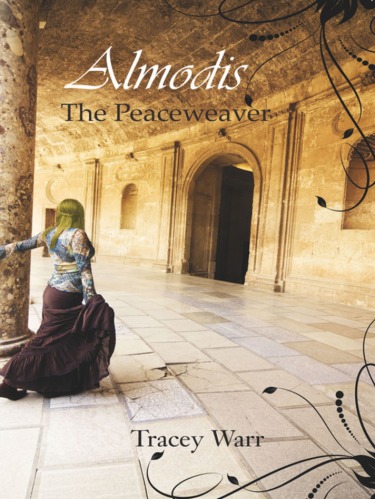
Cover of Ed Rayner and Ron Stapley, Debunking History
Some time ago someone got me a copy of Ed Rayner and Ron Stapley, Debunking History: 152 popular myths exploded, 2nd edn. (Stroud 2009), as a present. Their reasoning was that as a historian I ought to enjoy it, and eventually I read it and my reactions were sufficiently mixed that I thought a review might be in order. That is, after all, a form of appreciation of a gift, right? It’s made me think…
I have to make some kind of disclosure beforehand, which is that the authors tackle nothing earlier than the eighteenth century and mostly British and European episodes, with some US ones and recent global politics salted over the meat. That despite, I don’t think I’m just ragging on them here from the perspective of the ignored medievalist; they picked that period and area because it’s the one they know, they say early on (p. xv), and indeed their currency with the debates seems pretty clear (though of course, I’m a medievalist, so they could probably fool me pretty easily). And they have a reasonable preface about the different ways in which people can be wrong about history: factual error, uncritical adoption of myth or legend (the one without historical foundation, the other with) and controversy of interpretation leading to an as yet unjustified opinion. At the least, this is thinking work, and I’m not unfriendly to such books, as my occasional mentions of the key medievalist one will have shown.
One does have to wonder about the title, though. As far as I can see, the authors have chosen their particular misapprehensions to combat largely by meeting them as school or college examiners (p. xv), and fair enough, but very few of them meet their own definition of ‘myth’; indeed, ‘Popular Misunderstandings’ is only one of the thirteen chapters, while in the case of some topics like the Carbonari, the Tonypandy Massacre, the Speenhamland system, Harold Wilson’s devaluation of the pound in 1967, the origins of the word ‘dole’ (which they get wrong, because of not knowing their ancient history) or the Ems Telegram, I doubt that there is any really ‘popular’ opinion to correct; some of these things were unknown to me, and I am a historian who tries to talk to his modernist colleagues every now and then and so on. Probably only someone who has examined history A-Levels in the UK for a long time is familiar with everything in this book. Neither, often, do these ‘popular myths’ wind up ‘exploded’; some of them are sustained, most of them are conditioned or qualified and a few outright rejected, but even in those cases the reasons that people have understood incorrectly are also usually set out and seem reasonable in their own terms. So I think the publishers probably have some blame to bear for deciding what would be on the cover of this book and how little relation it might bear to the contents. This is not History debunked: this is, I think, two experienced teachers claiming a right to decide what History is.1
Despite that, the contents often seem pretty good, though not always and the bad cases are worrisome as we’ll see. The balance is about forty-sixty between cases where the authors think that the jury must remain out (so that the ‘popular’ misapprehension is that there is an accepted answer) and cases where there is an answer and it’s not the one the authors think is popularly held. Each controversy is set up with a short summary rubric then the facts as we know them are set out and the changes in historians’ interpretations or the reasons for popular misapprehension exposed. It’s usually clearly and pithily written and it sounds authoritative, though it would take a lot of work to dig up the evidence on which they base their conclusions; there is a decent-looking bibliography (pp. 437-441), thematically organised (and mostly recent) and separated into a reading list and a reference list, the latter apparently being the support for the authors’ judgements but hard to link back to them. Despite that, the book would make a good update for someone who studied modern history a generation ago, I think, though that person might then want to read more than or differently from what he or she is set here.
That reader would need to be more neutral than the authors, indeed, whose own prejudices and interests sometimes loom very large in their writing. This is in part evident in the selection: one or both of them clearly have interests in military history and there is an awful lot of ‘great men’ stuff. But again, I don’t mind that. More problematic are the judgements made in such cases. Is it really a historian’s job to answer such questions as “Talleyrand: was he guided by principle or personal advantage?” (pp. 41-43: the latter, so no explosion here), “The Last Tsar: a vicious tyrant?” (pp. 53-56: thoughtless more than vicious), “How Deserved was the Reputation of President Reagan?” (pp. 205-208: undeserved but deliberately promoted), “Edwardian England: a golden age?” (pp. 179-181: not for anyone below gentry level), “Hitler: dictator or dreamer?” (pp. 319-322: a man without workable plans or the brains to realise that but with the will and opportunity to oppress those who threatened his attempts to bring them about anyway, so, both?), “Disraeli: the father of modern Conservatism?” (pp. 376-379: no!), “The Papacy: was it soft on Fascism and Nazism?” (pp. 398-402: yes but for the sake of survival) or, most of all, “Did Tony Blair betray British Socialism?” (pp. 420-426: socialism already long dead in Britain, sez they)? I could pick many more, and they’re all matters of opinion, as if a historian’s proper job is to guide society’s moral verdict on its architects or attackers. We do, of course, exist partly to make people feel better about things, I admit that, even if another part of our point is to make people question everything, but these potted verdicts are so inherently subjective that I would expect any reader who can follow them to realise that there’s nothing authoritative about them and that one really doesn’t need a historian to reach them.
This is especially worrisome when the authors’ own prejudices come out. They are in general pro-Britain although only in the twentieth century, where all its politicians have apparently done the best they can with limited information except maybe Blair (an absurd topic to include, given that we have only heard most of the evidence while this post has been in draft, six years after the book was even revised)! One of the authors at least, however, is acutely contemptuous of the USA, and this comes out especially in another of these worrying subjective verdict cases, “‘McCarthyism’: did the end justify the means?” (pp. 66-70). Here I’ll quote the most egregious bit (p. 69):
“Could the same phenomenon recur in American affairs? There is little doubt it could. The political leadership of the USA and the bulk of the American nation remain intensely patriotic in their feelings. They are starry-eyed to the point of mawkishness in their love of their homeland, whether or not the ideal qualities for which they regularly lay their hands on their hearts are as evident in their lives as they imagine. It is their firm belief that foreign states are deplorably feeble and cynical in not sharing their shining patriotic vision. To them, a clear-sighted grasp of America’s national interests, a single-mindedness in their country’s interests and a willingness to sacrifice themselves for their country are absolute imperatives, producing the same gut impulse to ‘save America’ as it did fifty years ago against communism. In this sense the McCarthyite spirit lives on, whatever may the ‘unseen enemy’ that seems to threaten thair sanctified vision of themselves.”
Now this is not history-writing; it’s not even journalism. It’s just defamation, and directed against an individual it would be actionable. What is it doing between covers of a book written by people who believe they are correcting misapprehensions with empirical expertise, and who can write in that same book (p. xi):
“… the borderline between error and deliberate misrepresentation is uncertain and often blurred. Sometimes what originated as a simple error has achieved a certain permanence in people’s minds because it seems appropriate – a myth perhaps even more appropriate than the truth…”?
One wants to use phrases involving words like “mote” and “beam” here, but perhaps the good old Wikimedian protest is still the best one:

Randall Munroe, “Wikipedian Protestor”, XKCD, July 2007, http://xkcd.com/285/
1. The book’s cover and online blurb both say, “Ed Rayner and Ron Stapley are history professors and authors of history textbooks.” The latter is easy to substantiate, but I can’t get anything out of the web to show the former. Odd?




















